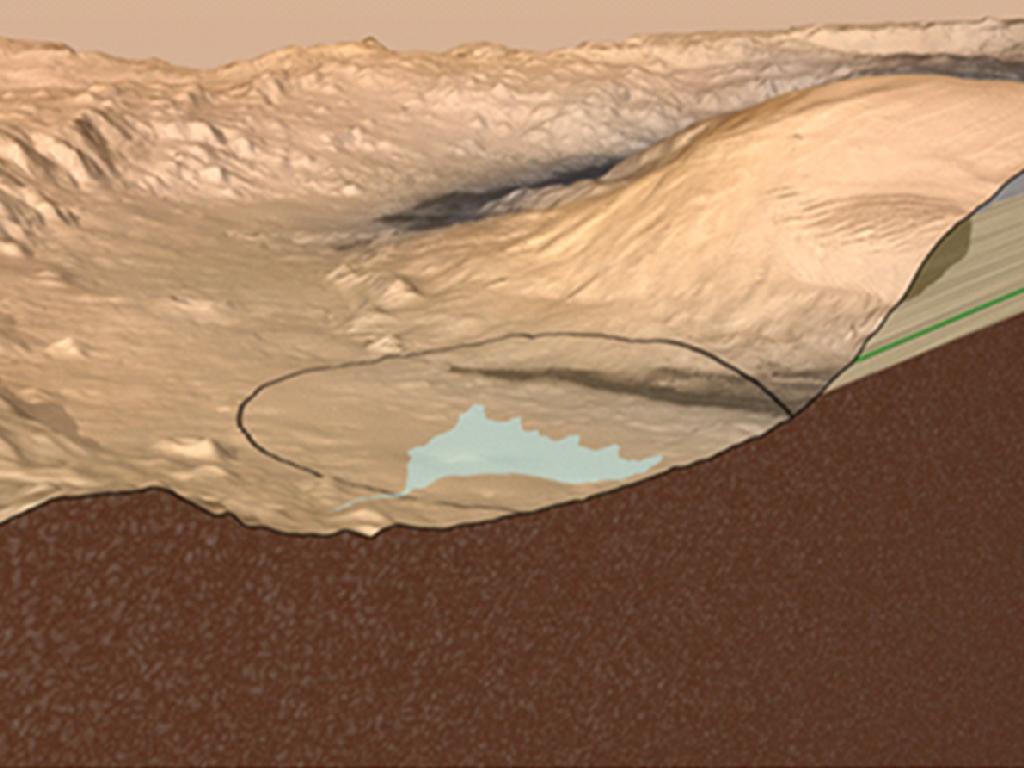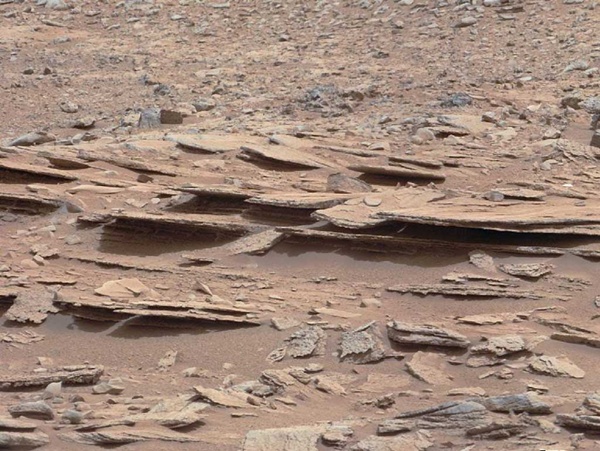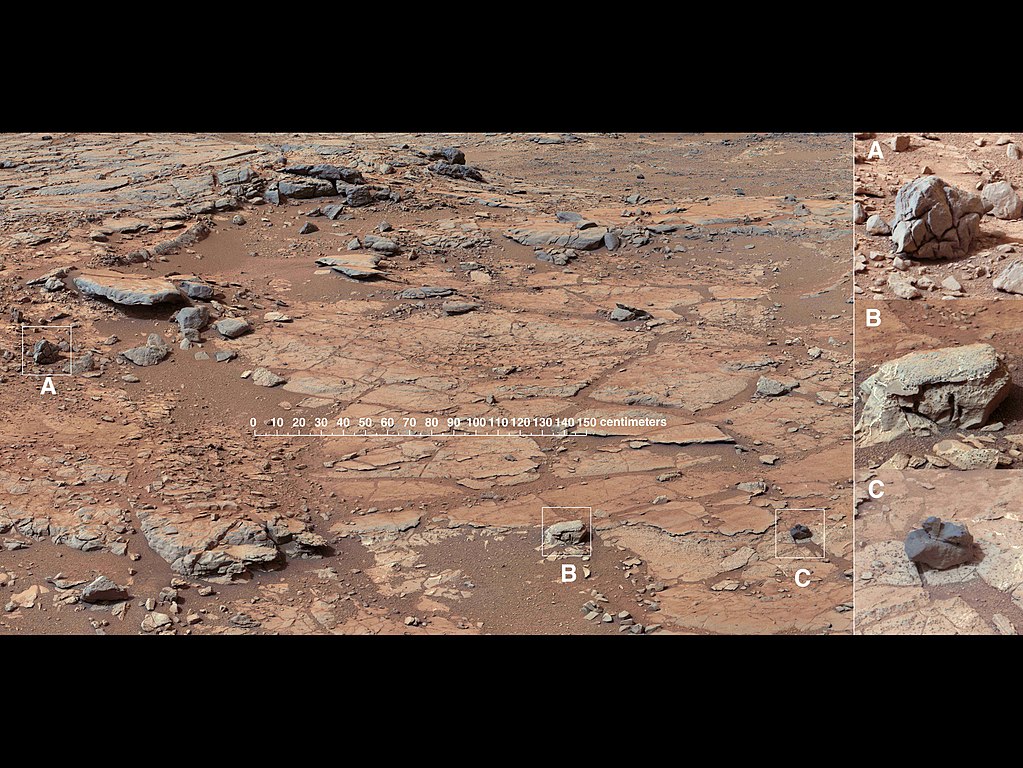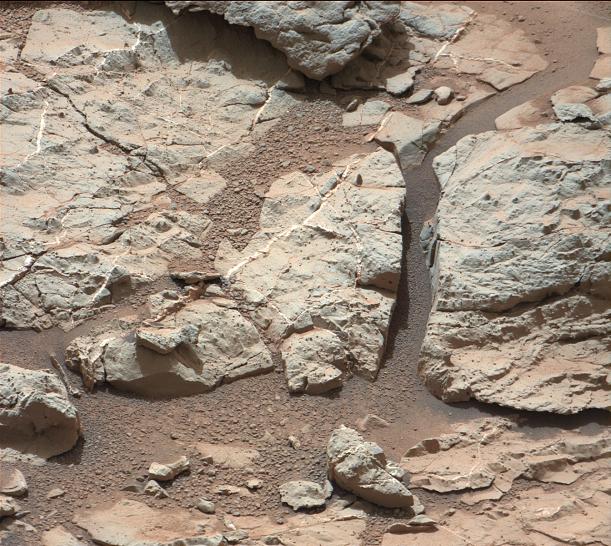VIKING Landers
The current environment of Mars is harsh,
surface pressure = 0.006 - 0.010
Bars, less than 1 % of Earth's surface pressure,
surface temperature from -90 C to -3 C, Earth's average temperature is
around 10 to 15 C, and
an atmosphere dominated by CO2,
Earth is 79 % N2
and 21 % O.
The current Martian atmosphere
is too thin to allow standing water on its surface today. It was to
this environment that the Viking landers were sent in 1974 (reaching
Mars in 1976). To the right
is shown a Viking lander next to Carl Sagan.
|

|

| The two Viking landers settled in the regions shown to to the
left. The landers among other things,
performed tests designed to search for
Life As We Know It (LAWKI).


|
Using their arms, the Viking Landers
obtained soil samples and sampled the atmosphere of Mars.

The landers performed three experiments: (i) Gas-Exchange
Experiment: Martain soil was mixed with a broth of organic
nutrients brought from Earth and
looked for the release of gases from
respiration;
(ii) Pyrolitic Release Experiment: Martian soil was
mixed with carbon monoxide and carbon dioxide brought from Earth to see if
the carbon would be incorporated into the soil;
(iii) Labeled Release Experiment: Martian soil
was mixed organic nutrients to see if products of
respiration and
metabolism appeared.
|

|
All three experiments intitially were thought to
yield positive results, however, only the labelled release
(gas release) experiment is still encouraging.
- When heated and the experiments repeated, experiments (i) and (ii)
still produced positive results. The heat did
not change things suggesting that was found was a result of
chemistry and not biology.
- The Labeled Release expereiment behaved
as one would expect biology to behave; as the temperature was
raised
the observed activity decreased.
The labelled release experiment detected an initial burst
of oxygen (Plant life?) followed by a slower release
(over days) of carbon
dioxide (Animals and/or microbes?) when a Martian soil
sample was studied. The burst of oxygen quickly subsided (within hours),
however. If biology
was responsible it was not immediately clear
why life would behave in this manner. Later work, however, discovered
an interesting thing, Solar ultraviolet radiation
striking the Martian soil
can produce hydrogen peroxide, H2O2, which then adheres
to the soil. If the soil is moistened, the hydrogen peroxide breaks up very
quickly releasing a burst of oxygen and forms other compounds.
Although, on the face of it this sounds bad as it then suggests
that the detected release of oxygen by Viking was due to chemistry, not
biology.
A fourth experiment suggested, however, that the
Labeled Release result was not due to biology as
analysis of the soil found that there were no traces of organic
molecules in the Martian soil. The only organics found were
chloromethane
and
dichloromethane
compounds, thought to arise as contaminants
from the cleaning fluids used to sterilize the spacecraft and instruments.
The lack of organic compounds was perplexing.
Phoenix inspired a new look at data from the Mars Viking landers.
It suggested that the two landers
may have found the building blocks for life after all.
The surprise discovery of perchlorates
(chemical compounds that contain the perchlorate ion ClO4-)
by the Phoenix Mars mission, 32 years after Viking, could mean the way
that the Viking experiment was set up destroyed any
carbon-based chemical building blocks of life, what the experiment
had set about to try and find.
"This doesn't say anything about the question of whether or not life
has existed on Mars, but it could make a big difference in how we
look for evidence to answer that question," said Chris McKay of
NASA's Ames Research Center. McKay coauthored a study published
online by the Journal of Geophysical Research Planets,
reanalyzing results of Viking's tests for organic chemicals in Martian soil.
The Viking lander scooped up some soil, put it in a tiny oven and
heated the sample. The only organic chemicals identified in the Martian soil
from that experiment chloromethane and
dichloromethane
compounds interpreted at the time as likely contaminants from cleaning
fluids used on the spacecraft before it left Earth. But
those chemicals are
exactly what the new study found when
a little perchlorate the surprise
finding from Phoenix was added to desert soil from Chile containing
organics and analyzed in the manner of the Viking tests.
Perchlorate,
an ion of chlorine and oxygen, becomes a
strong oxidant when heated. It could sit in the Martian soil with
organics around it for billions of years and not break them down,
but when you heat the soil to check for organics, the perchlorate
destroys them rapidly.
"Our results suggest that not only organics, but also perchlorate,
may have been present in the soil at both Viking landing sites," said the
study's lead author, Rafael Navarro-Gonzalez of the National Autonomous
University of Mexico, Mexico City.
The Viking experiment results have been controversial over
the years. Some scientists say the experiment actually
found evidence for life, while others say the results
were inconclusive.
McKay said that organics can come from non-biological or
biological sources. Many meteorites raining onto Mars and Earth
for the past 5 billion years contain organics. Even if Mars
never had life, scientists before Viking anticipated
Martian soil would
contain organic materials carried in by meteorites.
"The lack of organics was a big surprise," McKay said.
This interpretation proposed by Navarro-Gonzalez and his for
co-authors challenged the interpretation by Viking scientists that
Martian organic compounds were not present in their samples at the
detection limit of the Viking experiment.
How will we know for sure? The Mars Science Lab mission, with the
car-sized rover called Curiosity
resolved this question in that they found organic molecules in
crater Gale.
|

Curiosity
was launched on Nov 26, 2011 landing on Mars on Aug 6, 2012 in
Gale Crater. Mission
to investigate whether Mars once had conditions suitable for life.
Curiosity landed in the Gale Crater
Gale crater is an old basin, 3.6 to 3.8 billion year old. Gale crater is about
150 kilometers in diameter. It is the lowest spot on Mars for over 1,000
kilometers. Mount Sharp rises 5.5 kilometers above the crater floor. Sediments
in Gale crater which stopped accumulating 3.1 to 3.8 billion years ago
(as confirmed by radioactive age dating of rocks on Mars),
show that there was abundant flowing water and a lake that existed for tens
of thousands of years (if not millions of years) in Gale crater.
Gale crater is thus thought to be the site of a lake billions of years ago,
and rocks like mudstone formed from sediment in the lake. The mudstone
was found to contain 20% smectite clays. On Earth, smectities are provide
high surface area and optimal interlayer sites for concentration and
preservation of organic compounds when rapidly deposited under
reducing chemical conditions.

Curiosity panorama view around landing site
Yellowknife Bay
See layers of sedimentary rock. Initially, the landscape was formed by
sedimentation as materials were washed into the region by liquid water
and deposited. The materials went through cementation leaving the ground
hard. After this, the region underwent multiple episodes of percolation
and sedimentation. The region is thought to date from 4 billion years ago.
Sheepbed
Around the sheepbed area,
Curiosity drilled and analyzed samples
of mudstone sedimentary rock (rock formed in the presence of water),
found important elements for life, sulfur, nitrogen, oxygen
phosphorous, carbon and, from the clay, that the water on Mars was not
harshly oxidizing, acidic, or salty.
Windjana
is part of a sandstone slab Curiosity analyzed. Curiosity found
manganese oxides (MnOs) in the sandstone. MnOs form in the presence of
water and strong oxidation. Can come from microbes ("biology") or
atmospheric oxygen molecules.
Perseverance in Jezero
The next mission is Perseverance and Ingenuity in Jezero crater.
Perseverance landed a couple of
summers ago and has been steadily working.

Check out a Perseverance page on the Mars 2020 NASA website
https://mars.nasa.gov/mars2020/mission/science/landing-site/
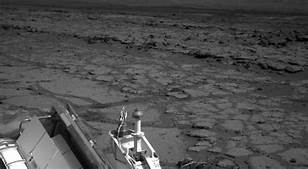
Some final comments:
comparing the amount of heavy water to normal water suggests that most
of Mars's water, but not like on Venus,
has been lost to space, methane goes up and down
seasonally, streams and lakes existed 3.3-3.8 billion years ago, and there
are organic molecules in 3.5 billion year old bedrock.









